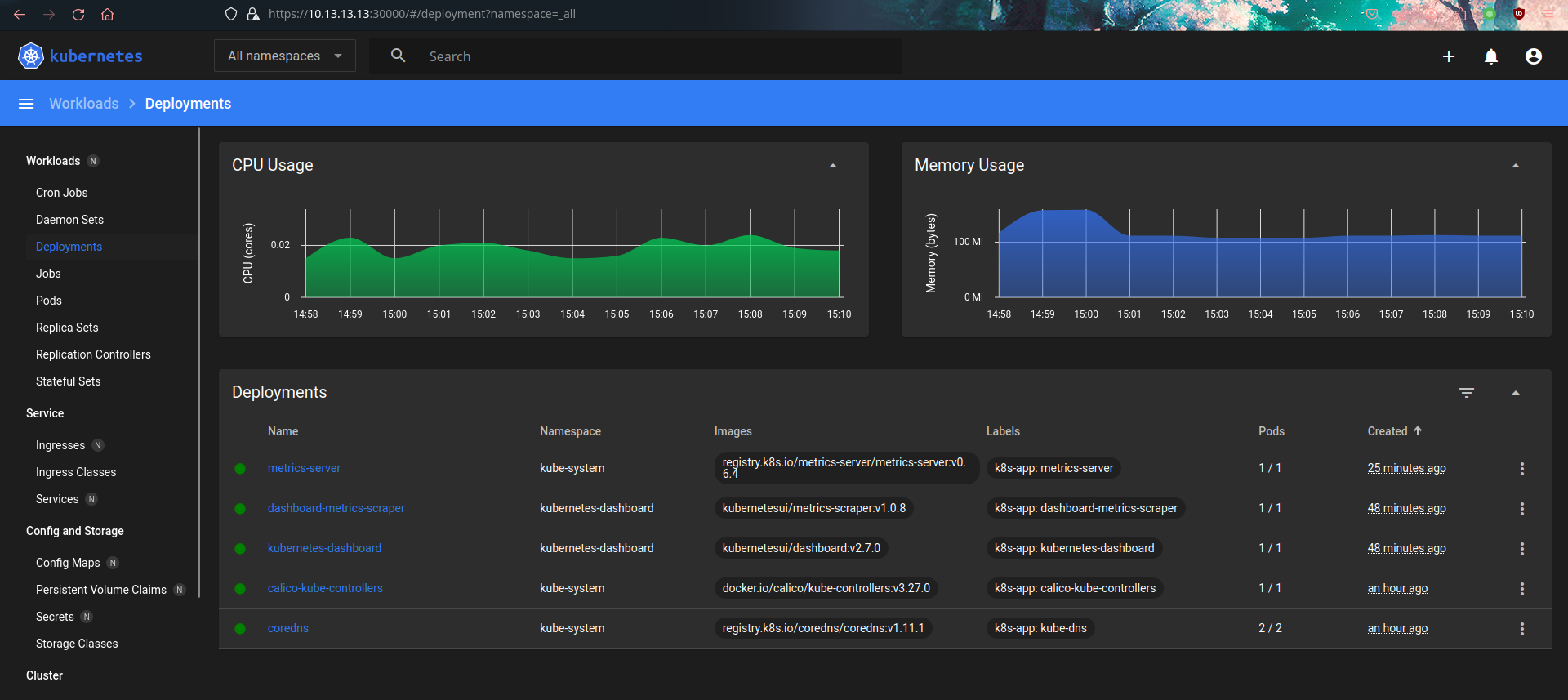Preparation#
1. Deploy metrics server#
First, we need to deploy metrics server before deploying kubernetes dashboard
1
| kubectl apply -f https://github.com/kubernetes-sigs/metrics-server/releases/latest/download/components.yaml
|
if you have a problem that metrics-server’s pod not running, probably because tls issue, so add --kubelet-insecure-tls on args section of deployment, then rollout restart it.
Kubernetes dashboard#
2. Deploy kubernetes dashboard#
1
| kubectl apply -f https://raw.githubusercontent.com/kubernetes/dashboard/v2.7.0/aio/deploy/recommended.yaml
|
3. Make user credential#
1
2
3
4
5
6
7
| kubectl apply -f - << EOF
apiVersion: v1
kind: ServiceAccount
metadata:
name: admin-user
namespace: kubernetes-dashboard
EOF
|
1
2
3
4
5
6
7
8
9
10
11
12
13
14
| kubectl apply -f - << EOF
apiVersion: rbac.authorization.k8s.io/v1
kind: ClusterRoleBinding
metadata:
name: admin-user
roleRef:
apiGroup: rbac.authorization.k8s.io
kind: ClusterRole
name: cluster-admin
subjects:
- kind: ServiceAccount
name: admin-user
namespace: kubernetes-dashboard
EOF
|
1
| kubectl -n kubernetes-dashboard create token admin-user
|
Copy the printed token
4. Exposing kubernetes dashboard#
1
| kubectl patch svc -n kubernetes-dashboard kubernetes-dashboard --type='json' -p '[{"op":"replace","path":"/spec/type","value":"NodePort"},{"op":"replace","path":"/spec/ports/0/nodePort","value":30000}]'
|
Finally access the kubernetes dashboard through your nodePort and login with the token created before
Result#

Refference#
- https://kubernetes.io/docs/tasks/access-application-cluster/web-ui-dashboard/
- https://github.com/kubernetes/dashboard/blob/v2.7.0/docs/user/access-control/creating-sample-user.md
- https://github.com/kubernetes-sigs/metrics-server
